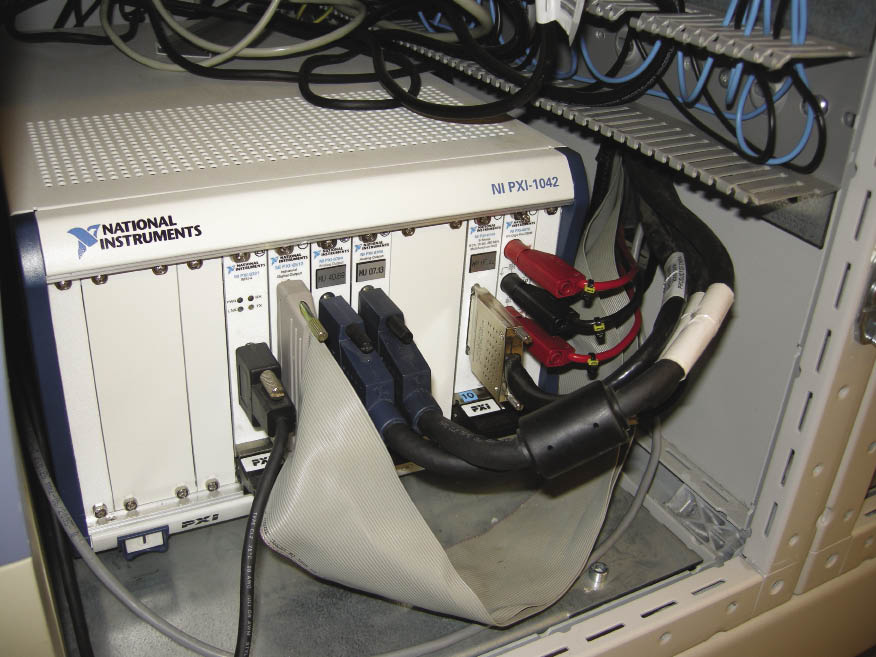In a wind project, the controls for a turbine is a package of distributed components such as main computer, I/O modules, and components for monitoring and controlling the turbine located inside the nacelle. It also includes operating panels, voltage-distribution boards, power-quality analyzers, and yaw-motor protection. Making sure everything works as designed can be challenging.
“A few years ago we spent several days finalizing the tests of our control system,” says Michael Bove, an electrical engineer with kk-electronic, Denmark. “Because of complexity of the systems, we had little test automation. This shortcoming resulted in long test times, and the test coverage for our control systems was not enough to meet our quality targets. As a result, we developed an automated test system to decrease test time and increase test quality.” Bove contracted CIM Industrial Systems A/S in Denmark to design and develop a solution based on National Instruments’ LabView and the NI PXI platform.
Previously
A previous test system was a collection of small tools the team tried to combine. The goal was to develop new controls that could test the whole system in a single application. “We also needed a system that was easy to duplicate at our international production sites,” says Bove. “To meet these requirements, we designed a system based on the NI’s test-management environment, TestStand. We store test limits and functions in a central database from which TestStand retrieves along with needed resources using Web services. The typical test sequence contains almost 1,000 steps, making it important to have an easy-to-use environment to configure these steps.”
To make adding and configuring the steps easy, CIM developed custom steps for the platform. A custom step is a specific test that is easy to add and configure for a nonprogrammer. For example, a test could be a step that generates a stimulus signal, measures the response, and compares the response to a defined limit.

The kk-electronic test system is based on NI PXI and SCXI hardware, and visible next to the computer on the lower shelf. All components are located within the nacelle.
A typical test sequence can return up to 2,500 results. Because tests acquire a large number of measurements, it needs the test platform to provide a high-channel counts. In addition to channel density, Bove’s team required the testing system to include signal conditioning to measure the wide mix of signals. Also, the team had to easily make future changes to the test computer to implement the latest processing power available.
Based on these requirements and the recommendations from the test system integrator, the team designed a solution based on the modular NI PXI and SCXI hardware. This platform provided instrumentation and signal conditioning slots as well as industry-standard devices for future compatibility.
The team used the NI digital multimeter (PXI-4070) with switches (NI SCXI 1127 and 1130) and NI Switch Executive software to measure voltage, current, frequency, and resistance signals from the system under test. A simultaneous sampling, data-acquisition module (NI PXI 6143) tests thyristor connections and frequency-converter outputs.
In addition to measurements, the team had to output many signals to the system under test. For example, the team used analog-output modules (NI PXI-6704) to stimulate analog inputs in control cabinets and verify emergency circuit connections through potential-free contacts. To test digital inputs in the cabinets and activate the system’s isolation relays the team used an industrial digital output module.
Project results
The setup successfully met early objectives. “Now we can automatically test all product functions,” Bove says. “Also, we significantly cut down cabinet testing time from five days to one day, making it feasible to increase production capacity. We are pleased with the architecture of the system because factories can easily implement it. After connecting to the network, the setup configures itself over the network using the configuration information in our database.”
Even though the automated process decreased test time, Bove says there is room for improvement. After optimization, he expects to reduce test time even further to three or four hours per cabinet. WPE
Filed Under: Projects





